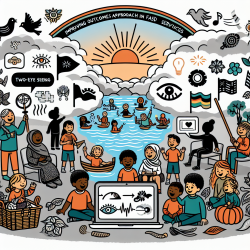Introduction
In the ever-evolving field of speech language pathology, practitioners are constantly seeking ways to enhance their skills and improve outcomes for their clients. While decision-making in medical contexts, such as late-stage melanoma, may seem far removed from our practice, there are valuable insights to be gleaned from interdisciplinary research. A recent study titled Approaches to decision-making among late-stage melanoma patients: a multifactorial investigation offers a unique perspective on patient decision-making that can inform our practice and encourage further research.
Understanding Patient Decision-Making
The study conducted an exploratory analysis of late-stage melanoma patients to identify themes in their decision-making processes. Two distinct types of decision-makers emerged: "reliant outsiders" and "active insiders." Understanding these types can provide practitioners with a framework for supporting decision-making in their clients, whether they are children or adults.
- Reliant Outsiders: These patients relied heavily on their healthcare providers for information and decision-making. They demonstrated low involvement in the decision-making process and often followed their provider's lead.
- Active Insiders: In contrast, these patients actively sought information, consulted multiple sources, and were highly involved in their decision-making. They utilized their networks and demonstrated a keen interest in clinical trials.
Implications for Practitioners
Understanding these decision-making types can have profound implications for speech language pathologists. Here are some ways to apply these insights:
- Tailor Communication: Just as "active insiders" benefit from detailed information and multiple consultations, children and their families may also benefit from tailored communication that considers their preferred level of involvement and understanding.
- Support Information-Seeking: Encourage families to seek additional information and consult with other professionals. This can empower them to make informed decisions about their child's therapy and outcomes.
- Facilitate Shared Decision-Making: Foster a collaborative environment where families feel comfortable discussing their preferences and concerns. This aligns with the shared decision-making approach observed in "active insiders."
Encouraging Further Research
The study highlights the importance of understanding the multifactorial nature of decision-making. As practitioners, we can contribute to this body of knowledge by conducting research within our field. Consider investigating how decision-making frameworks can be adapted to speech language pathology and how they impact therapy outcomes.
Conclusion
By integrating insights from interdisciplinary research, we can enhance our practice and improve outcomes for children. Understanding the decision-making processes of late-stage melanoma patients offers valuable lessons that can be applied to our work. To read the original research paper, please follow this link: Approaches to decision-making among late-stage melanoma patients: a multifactorial investigation.










